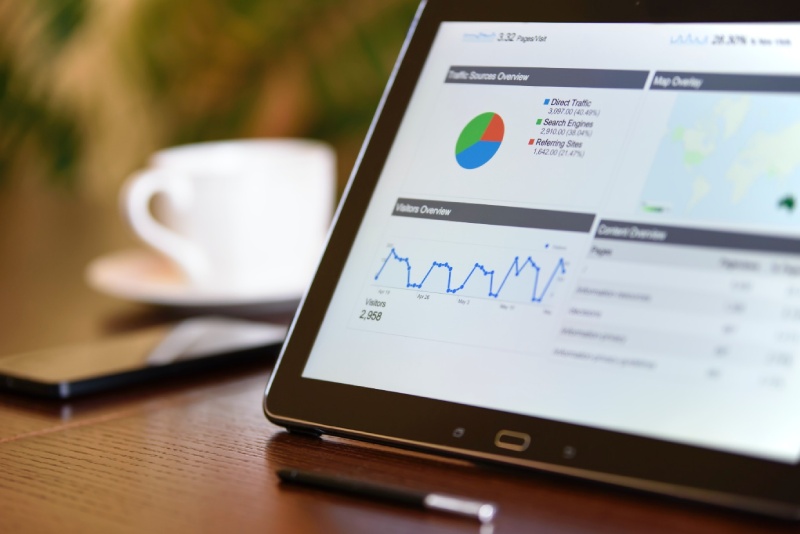
Earlier this year, Google announced they are officially sunsetting Universal Analytics on 1st July 2023 and replacing it with GA4 – a new and improved analytics platform which is bringing a number of changes to the way we track marketing activities.
Keep reading as we discuss how GA4 is changing attribution; perhaps for the better.
- What is attribution in marketing?
- Why is Google Analytics changing?
- So is attribution dead?
- Universal Analytics’ last-click attribution model
- GA4’s data-driven attribution model fills the gaps
- No model is perfect
- Final word
What is attribution in marketing?
Attribution is the process of assigning credit for a conversion or sale to the various marketing channels and touchpoints that contributed to it. It allows marketers to see which of their activities are driving results and which aren’t, ultimately enabling them to get the best return on investment (ROI).
Why is Google Analytics changing?
The change comes amidst growing concerns over privacy and how peoples’ data is being used. Third party cookies are of particular note here – and the way in which they track peoples’ data.
By embedding code across many different websites, third-party cookies track users’ movements across the internet and provide the data essential to attribution. This was great news for marketers who wanted to better understand their customers’ behaviour to target them more effectively, however, the use of cookies in this way can pose a risk to peoples’ privacy.
As a result, Google has adapted its analytics function with the creation of GA4 - changing the way users’ data is processed with less reliance on third-party cookies.
More information about the key changes to GA4 can be found here.
So is attribution dead?
Many marketers are concerned about how attribution will be impacted once Universal Analytics – and third-party cookies - are outed.
Third party cookies have become synonymous with attribution. However, many forget that with the more stringent GDPR laws in the last few years requiring websites to obtain explicit consent from users to allow cookies to be used – and with the obligatory rejection option – tracking users is, and has been, a challenge even before third-party cookies are phased out.
With the negative attention surrounding cookies, more users are deciding to reject cookie requests, leaving marketers with (an often significant) missing percentage of tracking information.
So is attribution dead? The truth is it was never really alive.
Universal Analytics’ last-click attribution model: an incomplete picture
To understand the benefits GA4 will bring to attribution, it’s important to understand how Universal Analytics operated before - and its limitations.
In the past, Attribution was primarily based on the ‘Last Click’ model. This meant that credit for a conversion was given to the last marketing activity that the user interacted with before converting. However, this model has a number of limitations.
1. The last-click model doesn't take into account the other touchpoints that may have contributed to the conversion.
For example, if a user saw an ad for a product and then did a search for it instead of clicking the ad before finally buying it, the last-click model would give all of the credit to the search campaign, giving an incomplete picture of what channels contributed to the purchase.
2. The last-click model doesn't take into account the different value of each touchpoint.
For example, a user who sees just one ad and then converts is worth more to the business than a user who sees multiple ads before converting.
3. The last-click model can be easily manipulated.
For example, a business could run an ad campaign and then use a discount code as the call to action. In this case, all of the credit for the conversion would be given to the discount code, even though it was the ad that drove the initial interest. By attributing a conversion to only the last touchpoints, this can cause the data to skew and emphasise a channel that may have had little to do with the purchase.
In summary, Universal Analytics’ old ‘Last Click’ attribution model was largely inaccurate and placed erroneous weighting on the last touchpoints, often missing earlier, but no-less significant channels.
GA4’s data-driven attribution model fills the gaps
GA4 has moved away from the Last Click model in favour of the data-driven attribution model.
This is a more sophisticated Attribution approach that overcomes the limitations of Universal Analytics. GA4 Attribution is based on a machine-learning algorithm that looks at all of the data points in a conversion path and assigns credit based on the actual contribution that each touchpoint made to the conversion.
Combining real-life data – from those who opt in to first-party ‘Ads Personalisation’ tracking on Google platforms – with machine learning, the GA4 data-driven model fills the gaps between touchpoints which were otherwise undetectable with the last click model.
This provides a more comprehensive picture of the channels that went into a purchase, and the data is more accurate and less easy to manipulate as a result. GA4 will also take into account the different value of each touchpoint, so that businesses can see the true ROI of their marketing activities.
No model is perfect
This is not to say that the new model will be perfect. Attribution models by nature are not 100% accurate – and as with any black-box model like Google’s there is no explanation as to why one conversion was attributed to one and not another.
However, where Universal Analytics was lacking, the new GA4 model attempts to consider the complexities of multichannel campaigns in an attempt to accurately attribute the correct channels, and the use of combined data shows their commitment to ensuring the quality of data is retained even in the absence of third-party tracking.
Final word
Remember that from 1st July 2023, Universal Analytics will stop receiving data from campaigns and will flow into GA4 instead. We highly recommend setting up GA4 now – to ensure your GA4 account has sufficient data to use before the change happens.
---
At TDMP we are experts in data-driven SEO, PPC, Content and Social campaigns which drive results. Take a look at our services here, or contact us for an informal chat about your marketing requirements.

